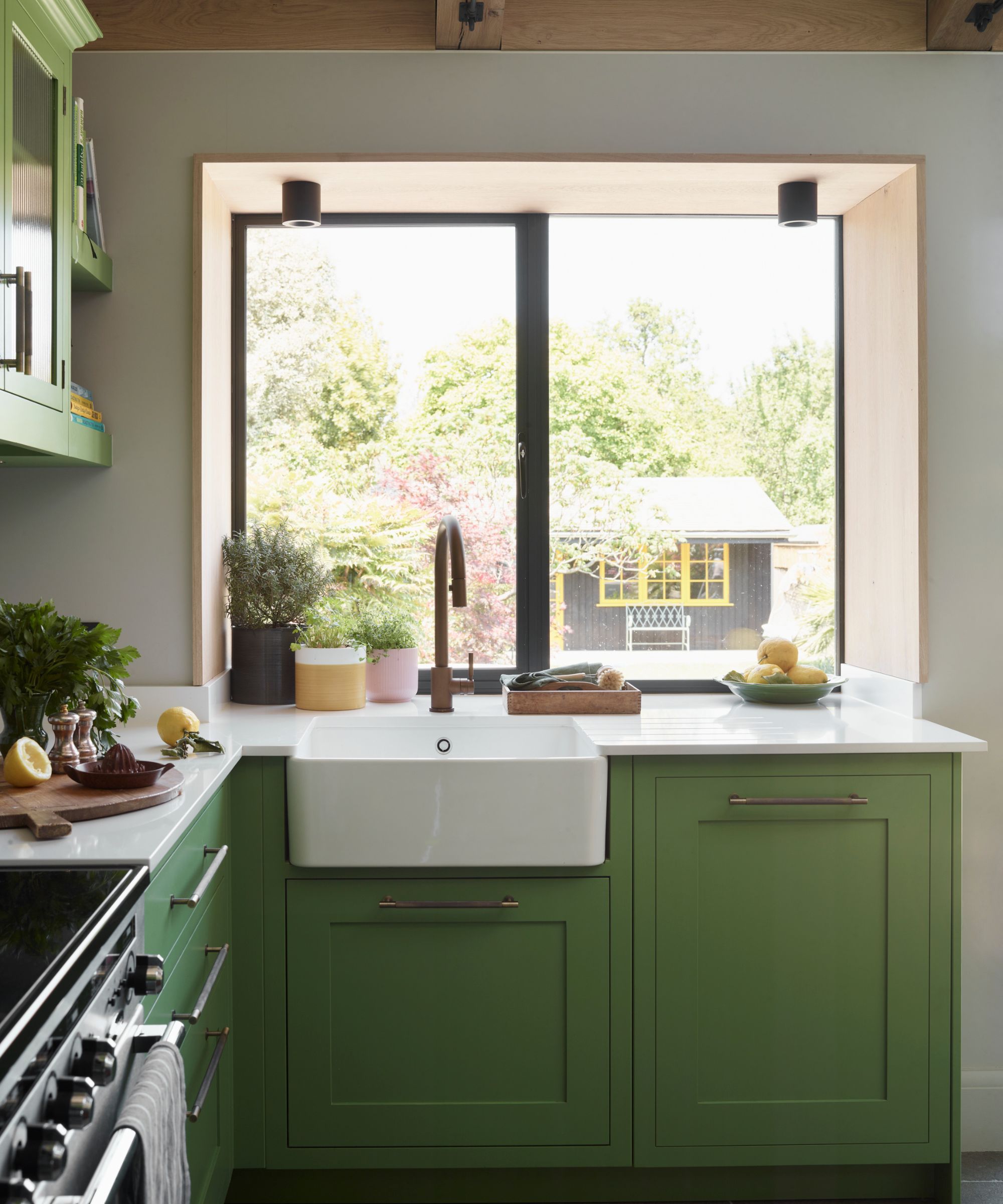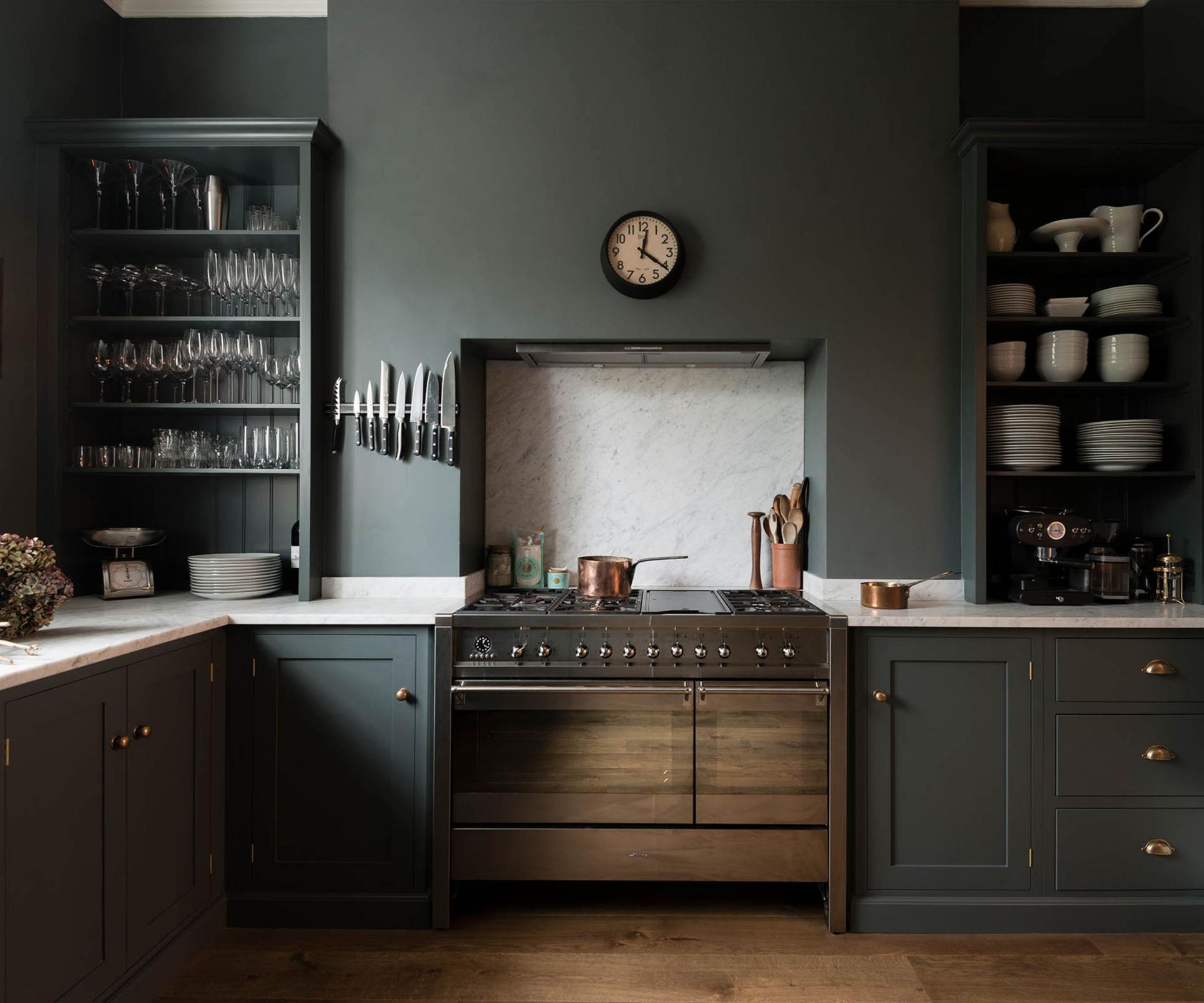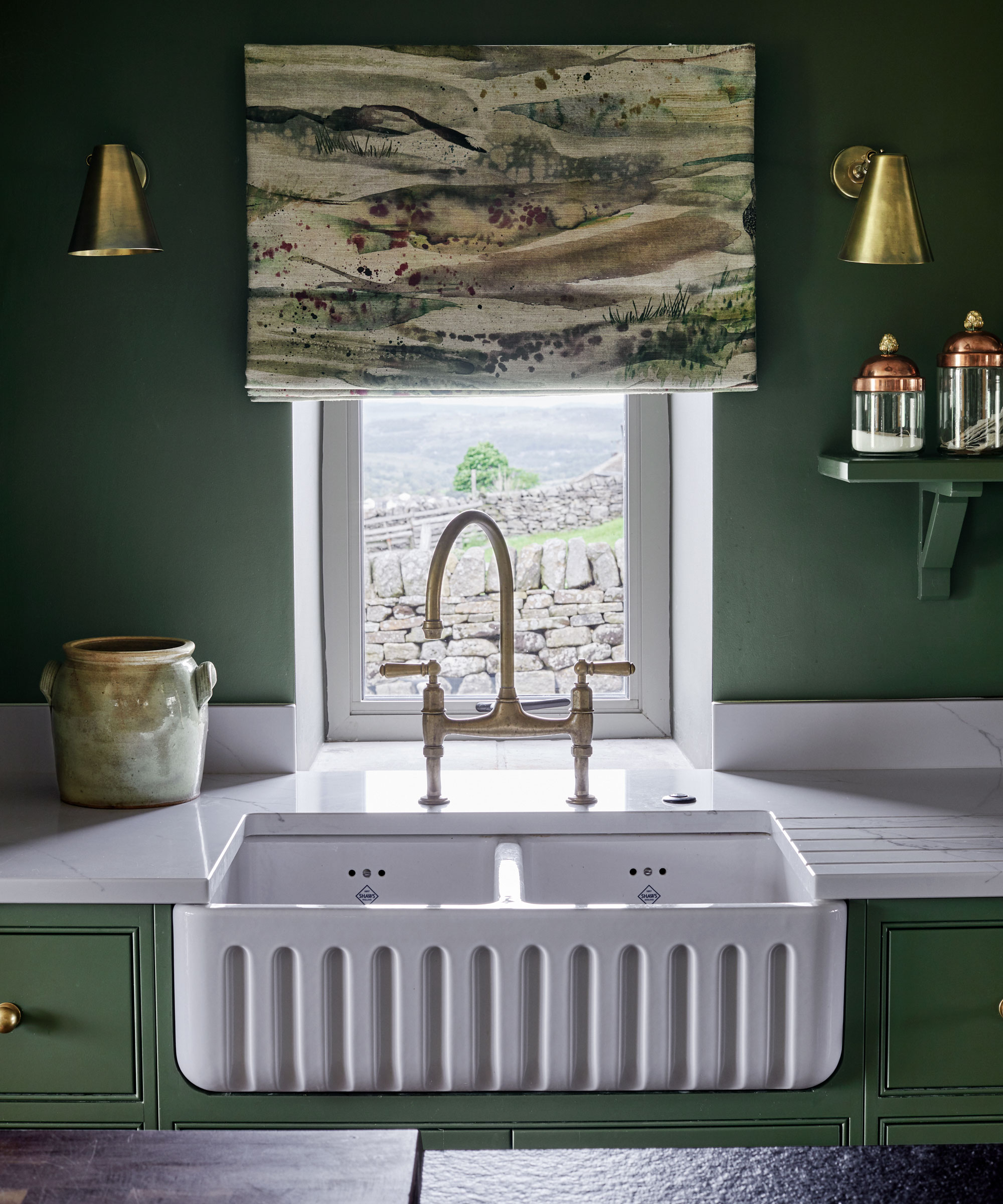Hidden moldy spots in the kitchen and how to banish them – 6 cleaner's secrets
How to prevent and remove mold build-up in these discrete spots in your kitchen


Kitchens are spaces that can be especially susceptible to the development of mold. This is due to their frequent exposure to moisture, which condenses on colder surfaces, causing hidden mold, and even posing a risk to natural fabrics and materials.
Areas around windows and any external walls are often colder than other surfaces, making them common places to find condensation. However, there are a number of hidden spots in your kitchen we often forget to clean in which mold can thrive if not dealt with.
Checking for mold in your home is important for protecting your home and health, which is why our experts have explained how to spot and get rid of mold in hidden spots in your kitchen.
How to spot and get rid of hidden moldy spots in kitchen
'A kitchen is a very high moisture area due to steam created by activities such as cooking and washing,' says explains Carl Lewis, owner of The DIY Fix. 'This excess moisture raises the relative humidity in the air.
'If this moisture is not removed, it will be drawn towards cold surfaces. These surfaces are known as "dew points," when warm moist air comes in contact with a cold surface the water condenses, turning from a gas into a liquid.'
Michael Golubev, CEO of Mold Busters explains the reason mold builds in hidden spots in kitchens: 'These areas are typically out of sight and can retain moisture for extended periods. Combined with the organic material found in kitchens, such as food particles, it creates an ideal environment for mold to grow.'
1. Under the sink

Under the sink is perhaps the most common hidden spot for mold development. 'This area is prone to leaks from pipes, and if not dried properly, the moisture means this can become a breeding ground for mold,' warns Michael Golubev.
Rich Mullins, founder of H2O Plumbing advises, 'Regularly inspect the area beneath the sink for any signs of leaks, such as water stains or a musty smell. Fix any plumbing problems promptly and use a mold-killing solution to clean and disinfect the area.
You should also routinely wipe down the cabinet's interior, ensuring it's dry. Consider using moisture-absorbing products to keep the area dry, such as this Vacplus unscented moisture absorber, from Amazon.
Rich Mullins also says, 'Consider using a dehumidifier to reduce humidity levels in the cabinet.' For this area, we suggest this KLOUDIC small dehumidifier, from Walmart, or you can run a dehumidifier in the kitchen during the quieter times of the day so it doesn't get in the way, leaving cabinets doors open to help lower the moisture levels.
2. Behind appliances

As an often overlooked place in a kitchen when it comes to cleaning, 'Mold often thrives in hidden areas behind kitchen appliances like the refrigerator, dishwasher, and oven,' says Rich Mullins. 'Over time, moisture can accumulate, creating an ideal environment for mold growth.
'To tackle this, periodically pull out your appliances, clean the floor and walls, and ensure they are thoroughly dry before pushing them back into place.'
Angela Rubin from Hellamaid says, 'If you spot mold, clean it immediately using a mixture of water and mild detergent. Ensure the area is thoroughly dry before moving the appliance back in place.'
'Use a mold-resistant sealant along the edges to prevent moisture penetration,' suggests Rich Mullins. We recommend this gorilla waterproof caulk and seal, from Amazon.
You can also create moisture channels and leaving adequate gaps for air flow and ventilation to reduce the risk of mold taking hold.

Hellamaid is an award-winning cleaning company in Canada that's been featured on multiple global media brands.
3. Inside cabinets and pantries

Mold can also develop inside kitchen cabinets or pantries, especially in humid climates, meaning it is useful to learn how to remove mold from wood without damage.
'Particularly those cabinets above steam sources like coffee makers or kettles. Steam rises and can get trapped inside, leading to mold growth,' says Josh Mitchell, HVAC technician and the owner of Air Conditioner Lab. 'Ensure you leave cabinets open occasionally to let them air out.'
Rich Mullins adds, 'To prevent mold in these areas, store dry goods in airtight containers to reduce moisture exposure. Periodically empty and clean the cabinets with a mold-killing solution, ensuring they are dry before restocking.'
You can find multi-surface solution mold treatment at Walmart.
4. Garbage disposal and drain

Garbage disposals and drains can be the ideal environments for mold to grow, with food residues and moisture build-up resulting in its growth.
Josh Mitchell recommends, 'Regularly run, clean and sanitize your garbage disposal and drain. Consider using white vinegar or baking soda followed by boiling water to flush it out.'
You can also use a safe drain cleaner if needed. We love this earthworm drain cleaner from Amazon. Ensure safe practices by not putting certain items in your garbage disposal to prevent the build-up of mold.
5. Rubber seals on appliances

Rubber seals on dishwashers can trap food particles and moisture, leading to mold build-up. 'Refrigerator and freezer door seals are another common culprit. Make sure to give those a good wipe down during your regular cleaning,' recommends Rosie Elliott, owner of Kitchen Appliance Answer.
If mold is present, clean the seals and interior with a mixture of water and white vinegar, or mild detergent and ensure they are intact. Dishwasher seals can deteriorate and allow moisture to accumulate, leading to mold growth, so be sure to replace them if necessary.

Rosie is a professional chef with experience in Western, Mediterranean, and Italian cuisine who has been cooking professionally for over 15 years.
6. Behind backsplashes and wall tiles

'In kitchens with tile backsplashes, moisture can seep behind the tiles, leading to mold growth,' warns Rich Mullins.
'If you suspect mold, remove a few tiles and inspect the area behind them. Clean and disinfect any mold you find, then reseal the tiles with mold-resistant grout and caulk to prevent future issues.'
Tips for preventing mold
'Periodically check these areas for signs of moisture or mold,' begins, Micheal Golubev, CEO of Mold Busters.' Ensure your kitchen is well-ventilated, especially when cooking. Any spills, especially under the fridge or sink, should be cleaned up promptly. Clean and sanitize your kitchen regularly, paying special attention to the areas mentioned. Any leaks, especially under the sink or from the fridge, should be addressed immediately.'
'For cleaning, consider natural mold-fighters like white vinegar or hydrogen peroxide,' recommends Josh Mitchell. 'For persistent mold, you might need to consult professionals.' You can also use bleach to kill mold.
'To ensure your kitchen is well-ventilated, consider using exhaust fans or opening a window when cooking to reduce moisture build-up,' continues Josh Mitchell.
FAQs
Can dishwashers collect mold?
Michael Golubev, CEO of Mold Busters warns, 'If not cleaned and dried properly, the dishwasher's damp environment is perfect for mold.
'The seal and the space below the door can collect water, leading to mold.'
'Mold can also develop inside the dishwasher,' says Hashi Mohamed. 'The warm, moist environment provides a breeding ground for mold and mildew.
'To prevent this, regularly clean the dishwasher's interior, including the door gasket, using a mixture of vinegar and water. Be sure to remove and clean the filter and utensil holders as well.'
After a wash, leave the door slightly open to let it air out.
Where will a refrigerator produce mold?
'The space behind and beneath fridges can accumulate moisture, especially if the drip pan overflows or isn't cleaned regularly,' comments Michael Golubev, CEO of Mold Busters.
The refrigerator can leak or produce condensation. This moisture, combined with the warmth of the fridge's motor, can lead to mold growth.
You should pull your fridge out and clean behind it at least once a year to prevent this from becoming an issue.
Drip pans in your fridge can also develop mold. These collect condensation, and food particles, and can harbor mold. You should also clean the drip pan regularly with soap and warm water to prevent mold growth.
Muffetta Kruger, owner of Muffetta's Domestic Cleaning Assistants shares a final tip for future kitchen renovations: 'Consider using mold-resistant materials, such as mold-resistant drywall or paint, during kitchen renovations to deter mold growth.'
In the meantime, she suggests natural remedies, such as vinegar or tea tree oil diluted in water to clean and disinfect areas susceptible to mold growth to prevent it from appearing.
Sign up to the Homes & Gardens newsletter
Design expertise in your inbox – from inspiring decorating ideas and beautiful celebrity homes to practical gardening advice and shopping round-ups.

Lola Houlton is a news writer for Homes & Gardens. She has been writing content for Future PLC for the past six years, in particular Homes & Gardens, Real Homes and GardeningEtc. She writes on a broad range of subjects, including practical household advice, recipe articles, and product reviews, working closely with experts in their fields to cover everything from heating to home organization through to house plants. Lola is a graduate, who completed her degree in Psychology at the University of Sussex. She has also spent some time working at the BBC.
-
 I’m an HVAC technician, and this is when I turn my AC on each year – plus 5 checks I always do beforehand
I’m an HVAC technician, and this is when I turn my AC on each year – plus 5 checks I always do beforehandSave yourself an AC hassle by running my checks and turning it on before big heat hits
By Josh Mitchell Published
-
 This simple marble hack elevates my budget-friendly wooden kitchen countertops and prevents the dreaded water damage for way less than you’d think
This simple marble hack elevates my budget-friendly wooden kitchen countertops and prevents the dreaded water damage for way less than you’d thinkThis design trick looks expensive, solves a problem, and was the easiest decision I made during my kitchen reno
By Charlotte Olby Published